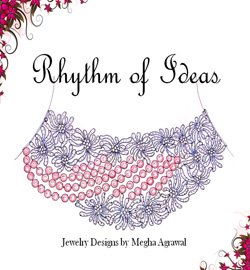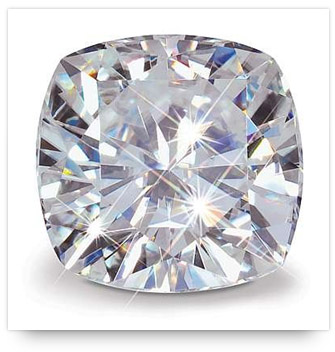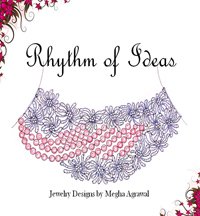Cubic Zirconia - It's not Diamond
Cubic Zirconia - or CZ as it’s popularly known - is composed of Zirconium Oxide (ZrO2) and should not be confused with zircon which is zirconium silicate (ZsSiO4). It was first discovered by a German mineralogist in 1937. However, that was the only time when this mineral was found naturally. So, whatever CZs you see in market today are synthetically produced in lab.
Origin of Cubic Zirconia
In 1970, a Soviet scientist invented a method to grow it in laboratory - crystallized version of mineral zirconium - for their space program. Prime objective of this development was to replace diamond with CZ in laser optics.
Notwithstanding, from jewelry perspective, CZ took some time to gain popularity among people. It was in 1976, when its commercial production started and it was first marketed under the trade name "Djevalite".
By 1980 (when Swarovski and Co started its mass production), annual global production of CZ reached 50 million carat, making it a household name by then.
Cubic Zirconia Facts
- It has a cubic isometric structure, which increases its density and hardness. It is due to this structure, it can be faceted just like diamond, giving it diamond-like appearance.
- CZ is a thermal insulator (i.e. it does NOT allow flow of heat through it) because of which it can be easily differentiated from diamond through thermal conductivity test.
- Since it is grown in laboratory under controlled environment, like moissanite it doesn’t have natural flaws (black spots, feathers) or inclusions.
- Another remarkable property of CZ that differentiates it from diamond is its density (specific gravity is 5.6 - 6.0) which is roughly 75% more than that of diamond. In other words, for the same size, if diamond weighs 1 carat then CZ will weigh 1.75 carats.
Cleaning Cubic Zirconia
Due to its hardness (Mohs Scale value is 8.5 - 9.0) and durability, it maintains its shine for longer period. However, it should be protected from oil and sprays, and you must take care to reduce its contact with skin because body oil can reduce its shine over the period of time.
Meanwhile, like other gems - sapphire, diamond etc. - CZ does not require any extra and special care, and normal cleaning solutions or ultrasonic cleaning or alcohol can be used to clean this stone regularly to maintain its diamond-like sparkle.
But, never use ultrasonic cleaner and alcohol or any other harsh chemical if CZ is mounted on sterling silver, because this can damage color of sterling silver (although not directly impacting CZ). In general, warm soap water and soft bristle tooth-brush is sufficient to clean any CZ jewelry. You may also read do's and don'ts of jewelry cleaning.
Cubic Zirconia Grading Scale
In normal scenario, grading of CZ depend on the purity and proportion of ingredients used, and the temperature and pressure condition the synthesis process is subjected to. As a standard, grading scale of CZ comprises of 5 grades, i.e. A, AA, AAA, AAAA, and AAAAA, with A being the lowest (with least sparkle and durability) and AAAAA the highest grade (maximum sparkle and durability).
Is Cubic Zirconia Allergic to Skin?
Lot of people ask this question because they think, since CZ is a diamond simulant so it may cause harm to skin. However, they are usually not aware that it's the metals like nickel etc. that can have allergic reaction with skin. Skin allergy is not caused by CZ or for that matter by any cheap stone.
Why CZ dominates the diamond simulant market?
- CZ is produced on a large scale.
- Price wise it is more economical than other simulants.
- Ease in maintenance and does not require any special care.
- It is faceted just like diamond, giving it a diamond like appearance.
Due to these factors CZ is most preferred among other diamond simulants and thus rules the simulant market. However, when it comes to synthetically-created diamond imitation stones, moissanite is giving a tough competition to CZ.
Difference between Diamond and CZ
Depending on the quality of stones, even an expert (without any testing aid) may not be able to easily tell the difference between these two stones. However the fact is, these two stones are totally different in terms of their physical and chemical properties.
While diamond is an allotrope of carbon (C), CZ is chemically zirconium oxide (ZrO2). Secondly, diamond being found naturally and due its rarity is many fold expensive than CZ which is manufactured on a large scale. For more on difference between these two stones and how to distinguish them, you can read how to spot a CZ.
Return from Cubic Zirconia to Diamond Formation page
Return from Cubic Zirconia to Diamond Jewelry homepage
I hope you'll not mind sharing this on Twitter, Facebook and with everyone else :)
Feel free to share if something is in your mind and want it to be covered on this site.
My Newsletter
Did you liked this article? Sign-up my FREE weekly newsletter and I'll send you more awesome new additions on this website along with latest jewelry happenings around the world, and download my Jewelry Design Album for FREE!
 |
|



